Share your results
Please enter your email
Results shared!
We've sent a link to your email so you can access your results at any time.
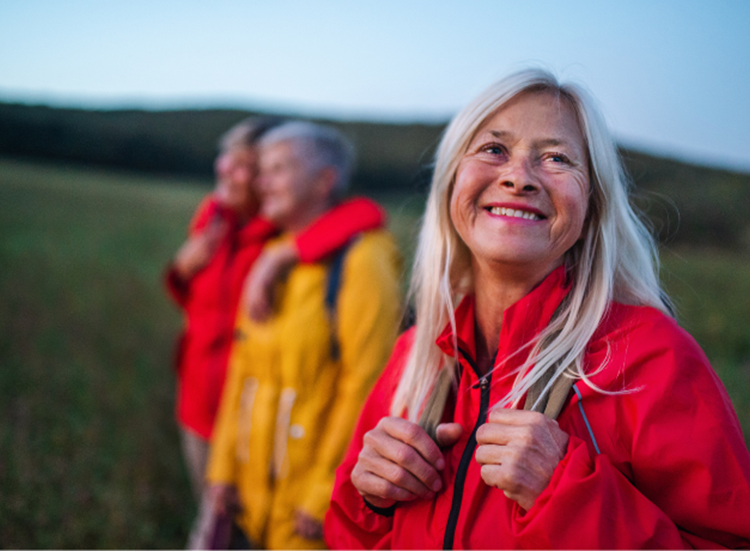
Walking is an excellent way to gently exercise your body and add some physical activity to your day. You could find daily walking particularly beneficial for many reasons, from health to happiness. For example, walking for an average of 30 minutes a day can lower the risk of heart disease, stroke, and diabetes by 30-40%.
Exercise doesn’t need to be strenuous to be beneficial for your health. The Australian Physical Activity and Sedentary Behaviour Guidelines recommend people over 65 do 30 minutes of moderate-intensity activity on most days, preferably every day.
You could choose to walk at a steady pace, or have short walks throughout the day, or walk up and down hills and stairs. Every little bit helps! Having the ability to walk without support is one of the best indicators of independent living.
Walking is an excellent way to gently exercise your body and add some physical activity to your day. You could find daily walking particularly beneficial for many reasons, from health to happiness. For example, walking for an average of 30 minutes a day can lower the risk of heart disease, stroke, and diabetes by 30-40%.
Exercise doesn’t need to be strenuous to be beneficial for your health. The Australian Physical Activity and Sedentary Behaviour Guidelines recommend people over 65 do 30 minutes of moderate-intensity activity on most days, preferably every day.
You could choose to walk at a steady pace, or have short walks throughout the day, or walk up and down hills and stairs. Every little bit helps! Having the ability to walk without support is one of the best indicators of independent living.
Read less....tmb-large%20card.png?sfvrsn=d8dc3f1_4)
Walking can improve your health and wellbeing so that you can stay independent for longer. Some other benefits of walking include:
Walking can improve your health and wellbeing so that you can stay independent for longer. Some other benefits of walking include:
.tmb-large%20card.jpg?sfvrsn=b88148ec_0)
One size does not fit all! Find a way to make walking pleasurable and interesting to you. This will help you stick to your new healthy habit for the long-term. You could try:
One size does not fit all! Find a way to make walking pleasurable and interesting to you. This will help you stick to your new healthy habit for the long-term. You could try:
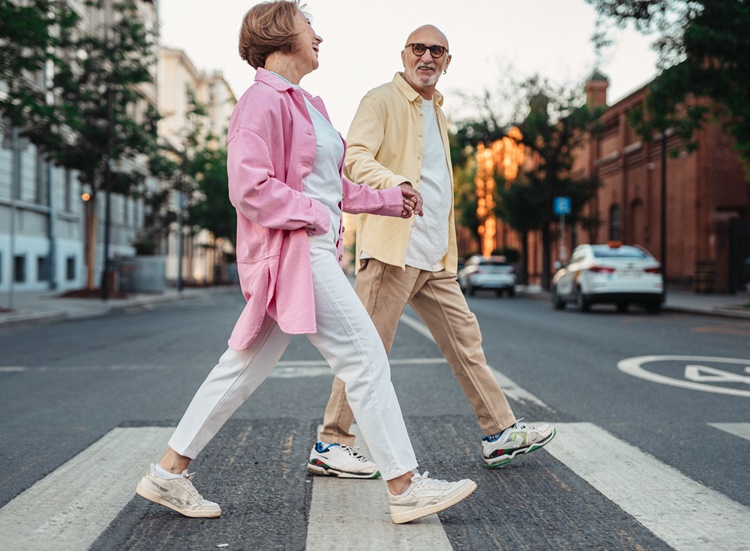
You don’t need a gym or exercise equipment to start walking. It is one of the most cost-effective ways to be physically active. However, there are a few things to check before you get started:
Health and wellbeing
If you have any health conditions or injuries, it is important to consult your doctor for advice. This is particularly important if you have not exercised for a while. If your doctor is concerned, ask whether there are any alternative activities you could do. They can help you choose suitable activities to match your health and fitness needs, or they may refer you to an exercise professional.
You don’t need a gym or exercise equipment to start walking. It is one of the most cost-effective ways to be physically active. However, there are a few things to check before you get started:
Health and wellbeing
If you have any health conditions or injuries, it is important to consult your doctor for advice. This is particularly important if you have not exercised for a while. If your doctor is concerned, ask whether there are any alternative activities you could do. They can help you choose suitable activities to match your health and fitness needs, or they may refer you to an exercise professional.
Read less...
Support and safety
Using a walking stick, hiking poles, walking frame, or wheeled walker shouldn’t stop you from going for a walk. These assistive products improve your balance, lighten the load on your joints, and make it easier for you to move around. If you feel you need support and that you would benefit from an assistive walking product, it is important to see an allied health professional. They can help you find the right product for you and set it up properly.
Clothing and footwear
Ensure you wear the correct shoes for walking. Comfortable clothing and footwear work well for most people. If you have issues with your feet or need specific footwear advice, talk to your doctor or podiatrist.
Support and safety
Using a walking stick, hiking poles, walking frame, or wheeled walker shouldn’t stop you from going for a walk. These assistive products improve your balance, lighten the load on your joints, and make it easier for you to move around. If you feel you need support and that you would benefit from an assistive walking product, it is important to see an allied health professional. They can help you find the right product for you and set it up properly.
Clothing and footwear
Ensure you wear the correct shoes for walking. Comfortable clothing and footwear work well for most people. If you have issues with your feet or need specific footwear advice, talk to your doctor or podiatrist.
Read less...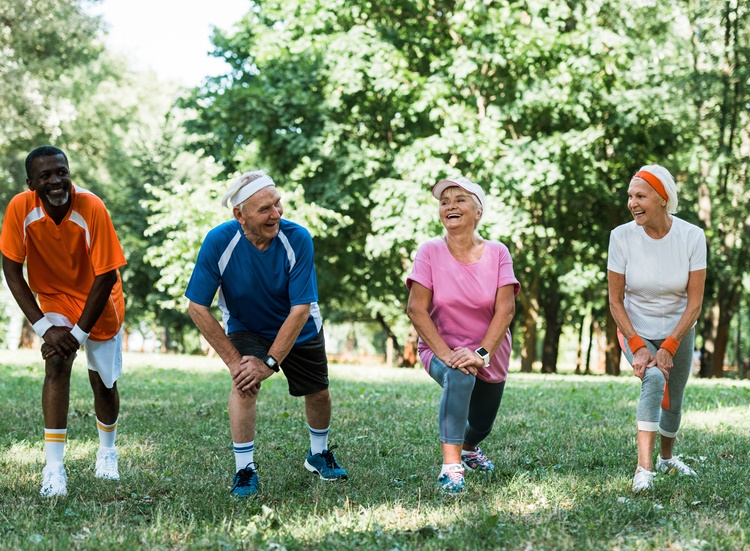
Make sure to warm-up before your walk. Start walking slowly for the first 10 minutes or so before increasing to a faster speed.
After your walk, take a few minutes to cool down and let your heart rate return to normal. Try a few gentle stretches before and after walking. Focus on moving the joints in your lower body. Add any movements that feel pleasant to your routine!
A good way to judge how fast to walk is to rate how you feel on a scale of 0-10, where 0 is resting and 10 is working extremely hard. To feel the benefits without pushing yourself too hard, your walking should be somewhere between a 3 (moderate) and 6 (somewhat hard). Stop if you need to. Pushing ahead when it’s not safe can cause injury.
Make sure to warm-up before your walk. Start walking slowly for the first 10 minutes or so before increasing to a faster speed.
After your walk, take a few minutes to cool down and let your heart rate return to normal. Try a few gentle stretches before and after walking. Focus on moving the joints in your lower body. Add any movements that feel pleasant to your routine!
A good way to judge how fast to walk is to rate how you feel on a scale of 0-10, where 0 is resting and 10 is working extremely hard. To feel the benefits without pushing yourself too hard, your walking should be somewhere between a 3 (moderate) and 6 (somewhat hard). Stop if you need to. Pushing ahead when it’s not safe can cause injury.
Read less....tmb-large%20card.png?sfvrsn=6e43aaa0_2)

There are lots of assistive products available for people who need help getting around.
Walking aids improve balance, increase stability, and assist with general weakness or injury.
They provide safety by preventing falls and improve independence by supporting you to move without the help of a carer or loved one.
Some common assistive products are explained in the following sections.
There are lots of assistive products available for people who need help getting around.
Walking aids improve balance, increase stability, and assist with general weakness or injury.
They provide safety by preventing falls and improve independence by supporting you to move without the help of a carer or loved one.
Some common assistive products are explained in the following sections.
Read less...
A walking stick can support you if you have difficulty walking. Walking sticks are an excellent aid for stability and balance. They're also helpful for people recovering from surgery or injuries.
There are a few different types of walking sticks:
A walking stick can support you if you have difficulty walking. Walking sticks are an excellent aid for stability and balance. They're also helpful for people recovering from surgery or injuries.
There are a few different types of walking sticks:
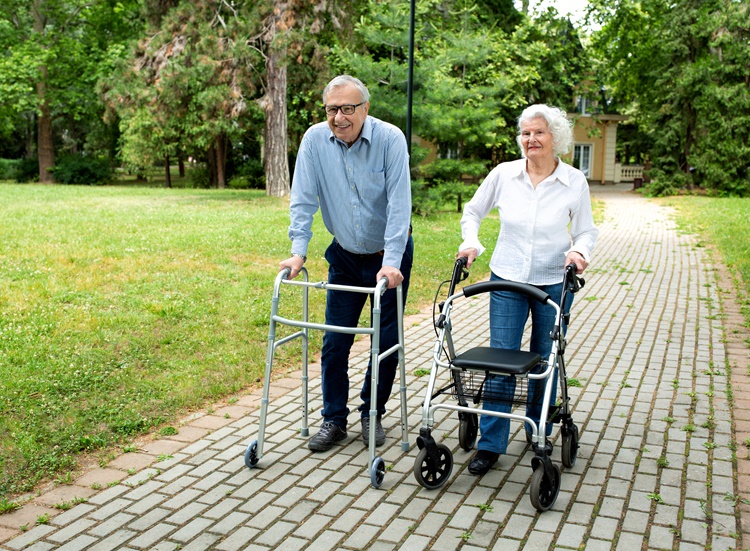
A standard walking frame has four legs and is picked up and moved forward with each step. Although it is more taxing to use, it is a popular choice because it provides extra stability thanks to its wide base of support.
Two-wheeled walking frames are available for people who find it too difficult to move a standard walking frame. This type of frame is ideal for people who are confident with their upper body strength and want less weight on their legs.
If you need more support, a rollator or wheeled walker might be more suitable.
A standard walking frame has four legs and is picked up and moved forward with each step. Although it is more taxing to use, it is a popular choice because it provides extra stability thanks to its wide base of support.
Two-wheeled walking frames are available for people who find it too difficult to move a standard walking frame. This type of frame is ideal for people who are confident with their upper body strength and want less weight on their legs.
If you need more support, a rollator or wheeled walker might be more suitable.
Read less...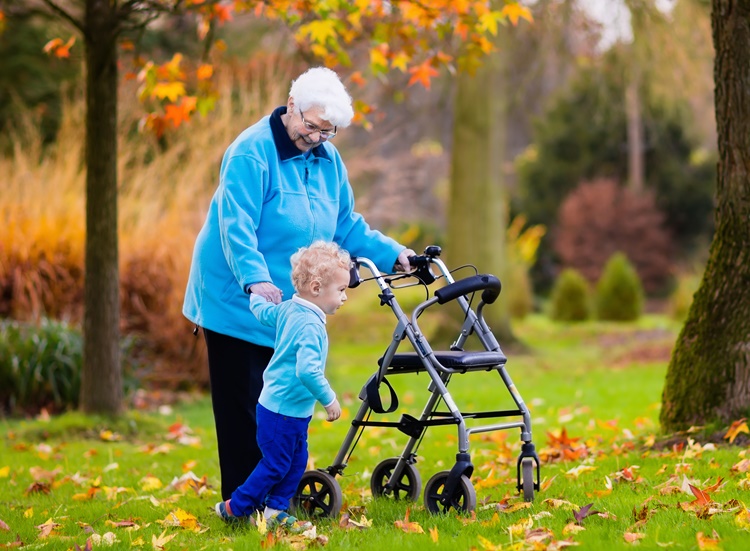
Wheeled walkers provide support for people who experience problems with balance and stability. Different walker types are used for different stages of rehabilitation, depending on your needs.
Outdoor walkers have larger wheels and are larger in size. They are more durable, so they roll over any obstacles in your path.
Indoor walkers are lightweight and smaller compared to outdoor walkers. They are much better suited for use at home. Many models include a tray to assist you in carrying food or drinks.
Wheeled walkers provide support for people who experience problems with balance and stability. Different walker types are used for different stages of rehabilitation, depending on your needs.
Outdoor walkers have larger wheels and are larger in size. They are more durable, so they roll over any obstacles in your path.
Indoor walkers are lightweight and smaller compared to outdoor walkers. They are much better suited for use at home. Many models include a tray to assist you in carrying food or drinks.
Read less...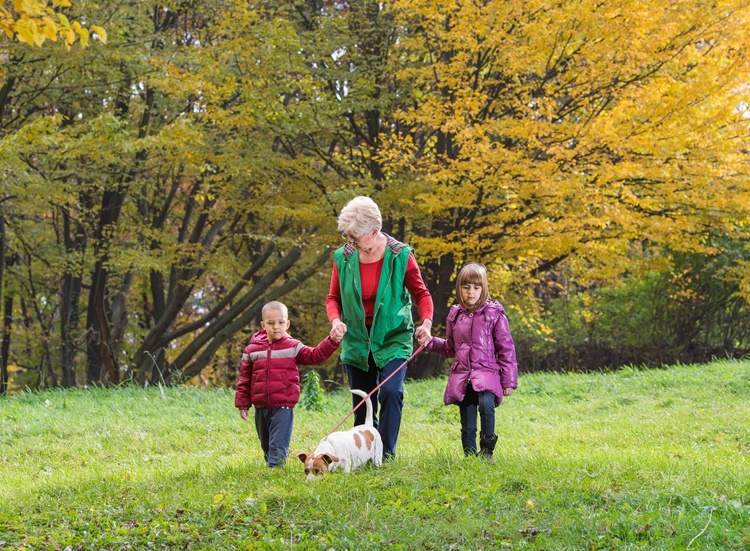
If you need advice or have any questions:
If you need advice or have any questions:
.tmb-large%20card.png?sfvrsn=5e283553_4)
If you need more information, take the LiveUp quiz by clicking the 'Let's go!' button below or get in touch with one of our helpful team on 1800 951 971.
If you need more information, take the LiveUp quiz by clicking the 'Let's go!' button below or get in touch with one of our helpful team on 1800 951 971.
Read less...
Heart Foundation. Walking. https://walking.heartfoundation.org.au
Australian Government Department of Health. (2021). Physical activity and exercise guidelines for older Australians (65 years and over). Australian Government. https://www.health.gov.au/topics/physical-activity-and-exercise/physical-activity-and-exercise-guidelines-for-all-australians/for-older-australians-65-years-and-over
Take our easy OpenUp quiz to get personalised advice and see suggested products, services and support in your local area or online.
Let's go!